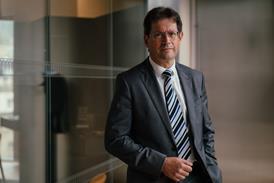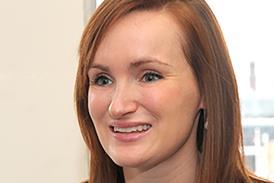The role of professional support lawyer offers a better work-life balance and opportunities for career progression are multiplying. Marialuisa Taddia reports.
Professional support lawyers (PSLs) are a creation of English law firms.
They were first deployed by magic circle and other City firms in the early 1990s, primarily to draft and maintain standard form precedents. As they spread across mid-size and smaller commercial firms, their functions expanded to provide legal updates, conduct research and give training to fee-earners on technical legal issues.
The role evolved in response to cost pressures and new technology including external online resources such as LexisPSL and Practical Law, which have reduced the scope of PSLs’ traditional functions. Simmons & Simmons’ Gary Barnett (a PSL since 1996) says: ‘There is more of an external focus compared to 20 years ago when [PSL] was entirely an internal role.
‘You are always looking to see how what you produce internally can be used externally for marketing and BD [business development].’ For example, PSLs work with the firm’s marketing and BD teams to develop the firm’s social media profile, write briefing notes and draft press releases.
‘The role has evolved immensely,’ says Reed Smith chief knowledge officer Lucy Dillon, a PSL at Linklaters from 1993-2002. ‘There is an understanding that these people who are knowledgeable about their areas of law but not caught up in transactional timetables and challenges can do a whole host of other things.’ PSLs also provide services directly to clients such as training, drafting, and ‘talking [to them] about their legal problems’, Dillon says.
PSLs are not just concerned with the ‘practice of law’ but also the ‘business of law’. They aim to ensure that their practice group delivers legal services ‘in an efficient and cost-effective way’, Dillon says. Central to this is knowledge management. PSLs maintain their department’s
knowhow system, and also encourage lawyers to share knowledge and contribute useful information to it. This knowledge can be collated into a clause bank or as a basis for draft precedents or example documents.
Before joining the US firm in June 2015, Dillon was director of knowledge management at Berwin Leighton Paisner (BLP) for 13 years. She was responsible for a sizeable cohort of PSLs, which BLP calls ‘knowledge development lawyers’, or KDLs. ‘The whole concept of [their] being “support” sends the wrong message,’ says Dillon, who adds that the US legal profession calls PSLs ‘knowledge management lawyers’.
‘If you say “PSL”, it sounds like we are an ancillary part of the practice, whereas actually we are partnering with lawyers to keep them on top of their game,’ says Chris Ormond, principal KDL for the funds and financial services group at BLP.
Why become a PSL?
A better work-life balance is still the main reason why fee-earners switch. PSLs typically work 9.30am-6pm and often part-time. They can also work from home.
‘I can manage my life,’ says a general property PSL who switched after 13 years of fee-earning. After the birth of her son she returned to work, but says: ‘The stress of trying to keep up with clients and having to get home and do bath-time with over an hour’s commute got too much.’
DLA Piper senior PSL Carolyn Agnew says: ‘There is a two-way flexibility. I will put in extra time after ordinary business hours if the firm needs it because equally they are very good at letting me have the flexibility I need to go home early or work from home.’
But the role is no longer attracting mainly working mothers. More PSLs are male and work full-time. ‘It has become a recognised branch of the profession and is attracting people for all sorts of reasons,’ Dillon says. ‘It is working parents and people who have other interests outside work.’
Barnett qualified as a solicitor in 1986 at what was then Herbert Smith, initially practising as an associate in the corporate department before joining the firm’s tax group in 1990, where he spent three years. He says of his decision to become a PSL: ‘It wasn’t driven by family work-life balance issues. It’s just that, while fee-earning, my interests outside work were restricted beyond the extent that I was happy with.’ Barnett indulged one of his passions when he left Herbert Smith in 1993 to spend 18 months travelling, before joining Simmons & Simmons as a PSL. Over the past two decades, Barnett’s employer has allowed him to take extra unpaid leave for his travels.
People also become a PSL to focus on black-letter law, away from client demands and negotiating deals. Before joining Simmons & Simmons, Barnett spent 18 months as a tax writer and editor at Butterworths publishers.
More freedom
Gary Barnett wasn’t at work when I phoned for our interview. Half an hour later he sent his apologies: his wife needed a lift to the hospital for an X-ray and he would not return to office until the next day.
Speaking later, Barnett, a senior professional support lawyer (PSL) in the corporate tax group at international firm Simmons & Simmons, said that what happened was a good example of the flexibility he enjoys as a PSL: ‘You are not at the beck and call of a client. The time pressures are different. There’s plenty to do, but there is more freedom as to when you do it.’ After the children went to bed, Barnett spent a few hours finishing the work he had been doing before his wife called.
Another reason for switching is that ‘career development within the professional support field has increased in recent years’, says Lindsy McGowan, senior manager at Hays Legal recruiters. ‘After moving into a PSL position, a natural second step is to supervise a team of PSLs, while perhaps at the top of the ladder there would be the role of central or departmental head of knowhow. Encouragingly, several large City firms have recently afforded lead PSLs partner status.’
Ormond was promoted from KDL to principal KDL last July. At BLP, PSLs can progress from junior KDL to associate director, equivalent to junior non-equity partner. ‘It makes a big difference in the way you are perceived and also shows that the firm takes you seriously,’ she says. ‘The expectation for each promotion category is transparent.’
Not all firms offer a clear career path or the same opportunities as for fee-earners. At Simmons & Simmons there are only two levels: PSL and senior PSL; at DLA Piper the role does not progress beyond senior PSL; and at BLP the ceiling is associate director.
But this does not mean that PSLs are not appropriately rewarded or that their seniority is not recognised. ‘I am very well paid for what I do,’ Agnew says. ‘I am treated like a senior fee-earner for the package I get.’
Work-life balance has its cost, of course, and typically firms discount 10%-15% from the amount they would pay a fee-earner at the same level, according to Hays Legal. Agnew, an equity partner for five years before she joined DLA Piper as a senior PSL, took a pay cut of about 50%. But ‘it is sensible that as a PSL you are paid less’. That is the ‘payback’ for working regular hours and flexibly, and not running a business. Unlike PSLs, who are employees, equity partners work long hours managing the firm, she concedes.
Qualifications and experience
‘The clue is in the title,’ Dillon says, pointing to the word ‘lawyer’, which features in all permutations of the role.
‘You will need at least two-three years’ PQE in the relevant practice area,’ McGowan says. ‘We often see more junior PSL positions available in larger firms. Clients at smaller firms are more likely to approach us requiring a senior lawyer with over three years’ experience.’
People typically come to the role at two stages in their career. Dillon says: ‘People who quite early on – four- or five-years’ qualified – have done enough transactional work to realise that this is not what they want. Or the decision is later and it’s those closer to partnership who want to stay in an active part of the profession but don’t want partnership.’
Agnew says: ‘We only hire fairly senior people because they can contribute so much more to the business.’ Although Agnew was perhaps exceptional in that she became PSL after being a partner for a number of years, DLA Piper has hired PSLs at senior associate level.
Flexible friendly
London-based Carolyn Agnew has been a senior PSL in DLA Piper’s banking and finance group since 2010. ‘In transactional finance work your time is not within your control,’ she says. ‘I was a partner for 18 months after I had my son and I was being pulled from both ends. One of the fantastic things about being a PSL is flexibility.’
Agnew works full-time, but one day a week from home. She can attend school events and then catch up with work later; and she can work anywhere. During school holidays Scottish-born Agnew works from DLA Piper’s Edinburgh office so her son can spend time with grandma.
‘We are an overhead,’ Agnew adds. ‘We come out of the billing that fee-earners make so it’s important we are seen to add value by saving fee-earners a lot of time.’ Her seniority means that she can sign off documents that would otherwise need partner approval, thereby reducing ‘bottlenecks’. She sits on the firm’s legal opinions committee, advising on and ensuring the firm’s legal opinion is consistent across its global network; she works with partners to ‘stress-test’ complex financial structures; and she delivers training for clients and external organisations alongside partners.
‘It helps if you are senior to start with because you’re expected to perform at a high level,’ she says. ‘You must be commercial as well, particularly if you are in a transactional practice. No one in the middle of a transaction wants to hear you saying, “well, section x says this”. They want to know “section x says this, these are your two options of what to do”. And then it’s for the partners to make the decisions.’
Motivation and persistence are also important because deadlines are often self-driven and not dictated by clients. Dillon observes: ‘You need the ability to push projects forward because you need to involve the [fee-earners] in everything. That is often challenging when people are busy, so you need resilience to keep asking people.’
As most positions require a broad range of responsibilities, PSL candidates need a wide range of skills. McGowan points out that they are increasingly involved in marketing and training.
Return to fee-earning?
PSLs are a tiny minority of the profession – 838 of 132,632 practising certificate holders, data shows. And anecdotal evidence suggests that there are fewer now than before the 2008 financial crisis. The downturn led firms to cut support functions to minimise costs and scale back opportunities for career progression.
So what do recruiters say? ‘The market for PSLs has been stable for two years. There was an initial peak at the start of the economic recovery which has now steadied,’ McGowan says. ‘US firms in particular increased their hiring for PSLs significantly at the start of the recovery.’
Agnew says that although numbers ‘are fairly static’ there are now more PSLs in London-based US firms. Until recently, she says, US firms saw PSLs as ‘glorified paralegals’, but by hiring English partners (who are familiar with what PSLs do) they are realising that PSLs are ‘incredibly good value for money.’
Yet, PSLs are a fixed cost for firms. Their salary may be discounted on a fee-earner rate but, as Dillon says: ‘A PSL is a lawyer, and so it is an expensive resource,’ especially for smaller firms. That is why it is mainly larger outfits that tend to offer PSL roles.
It is possible to return to fee-earning but few want to: ‘People don’t go back because the range of tasks is so great – it is evolving all the time,’ Dillon says.
Ormond says: ‘The fact that when I’m not working I can spend time with my family, without the pressure of expecting a call, for me outweighs the career trajectory of going back to fee-earning.’
Barnett, too, is happy as a senior PSL, working for the firm he joined 20 years ago. ‘This is the [role] that best suits me.’
Marialuisa Taddia is a freelance journalist






























No comments yet